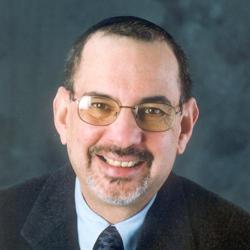Teaching Our Jacobs and Esaus

Recounting the gestation, birth and maturation of the Bible’s most famous twins, Esau and Jacob, reminds me of a wonderful PBS film entitled, “How Difficult Can It Be? The F.A.T. City Workshop.” F.A.T. stands for Frustration, Anxiety, Tension. Through a series of simulations and exercises, Richard D. Lavoie, a gifted special education teacher, turns a group of highly accomplished adults into learning disabled students in a matter of minutes. He reminds us that children with learning differences or disabilities experience them not only in school, but twenty-four hours a day, seven days a week, leading to daily frustration, anxiety and tension in their everyday lives. During a poignant moment in the film, Lavoie comments that fairness is not treating everyone the same, it’s giving everyone what she or he needs.
Jacob and Esau, their struggles, relationship and vastly different personalities and learning styles stand as archetypes for me of the profound differences our children have in abilities, learning proclivities and achievements. When it seeks to understand the description of the two twins rough-and-tumbling in her womb, the Midrash (B’reishit Rabbah 63:6) comments on Rebekah’s prenatal care. Jacob wants to jump out of the womb when Rebekah passes a synagogue or house of study (a Rabbinic retrojection of institutional forms). When she passes a house of idolatry (brightly lit, like a mesmerizing casino), Esau can’t wait to flee the womb. As the boys grow and go off to school, yet another Midrash relates how Jacob was like a myrtle and Esau a wild rose, growing side by side. Jacob had a pleasant aroma and Esau thorns. After thirteen years of schooling, Jacob continues on to higher Jewish education and Esau pursues a life of depravity where idolatry is a common practice.
Later Jewish tradition lionizes Jacob, the studious, school-capable, avid learner and demonizes Esau, the outdoors man, the hunter, the man who needed to work with his hands and be on the move. For me as a parent and educator who has dealt with many children, including his own, who come to school with a wide range of learning strengths, needs, deficits and learning challenges, the juxtaposition of these two archetypal students has powerful resonance. Because Jewish tradition is so scholastic, so verbal, so demanding of linguistic and logical thinking types of intelligence, it often devalues the other gifts that many students bring to their school experience. Our texts communicate the message that to be a good Jew you need only to be a master of words, a skillful manipulator of texts. Esau was anything but that kind of student.
Some, like our colleague and teacher Dr. Ora Prouser, see marked touches of ADD/ADHD-hyperactivity/attention deficit disorder in Esau’s impulsiveness and inability to sit still for very long. Notice how the boys’ parents react: Isaac favors Esau’s manual labor, outdoors, hands-on life style, while Rebekah clearly prefers the scholar, the son who is school-wise and excels in the academy. So often we as parents tend to immediately value Jacob’s talents over Esau’s. We are socialized into a culture that values book learning above all else. But not all of our children are verbal learners. Those who are not, often get the message that they are less valuable, less cherished than the scholar.
There have been many times when I have seen parents grieve when the psycho-educational testing reveals severe learning differences or deficits in young children. I have seen parents unwilling to accept their children’s strengths and weaknesses, instead blaming the teacher or the school for their problems. I have watched countless parents struggle with issues of school placement for children, because they want to treat all their children equally, fairly. And here is where Lavoie’s wisdom intersects with our parashah. Fairness is giving our children what they each individually need, not in treating them all the same way. Rabbinic tradition unfortunately demonizes Esau, identifying him first with our enemy Edom, then Rome, while it glorifies Jacob as the paean of pupil excellence setting up an unhealthy dichotomy and inappropriate stereotype for how we value our children and their needs. One child may do very well in a day school setting, but another sibling may be better off in an alternative educational milieu. Sure, it’s more convenient to have all our kids in one school, but is it fair to each of our children to sacrifice one for the needs of the other by setting the standard of fairness as meaning that all our children must do the same thing in the same way?
The epic struggle of Jacob and Esau to develop self esteem and individuality is paradigmatic for the way we treat each of our children. This also may mean that we need to strive mightily to provide alternative means of access to Jewish learning for the wide variety of talents and intelligences different children bring to their Jewish school experiences. We have our Esaus and our Jacobs, and we must provide experiences that value both types of learners if we are to capitalize on the multiple strengths our children can contribute to the Jewish people. Esau’s way of apprehending and encountering the world is no less relevant to his spiritual development than Jacob’s approach. May we as educators and parents have the wisdom to value our children’s differences and show our fairness by meeting each person’s individual needs. Ironically, as I sit here at my computer keyboard composing this essay, listening to the plumber fix my humidifier, I wonder which one of us knows better the path to the living God?
Shabbat shalom.
Rabbi Steven Brown



